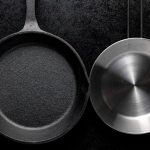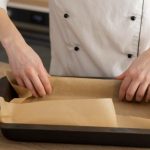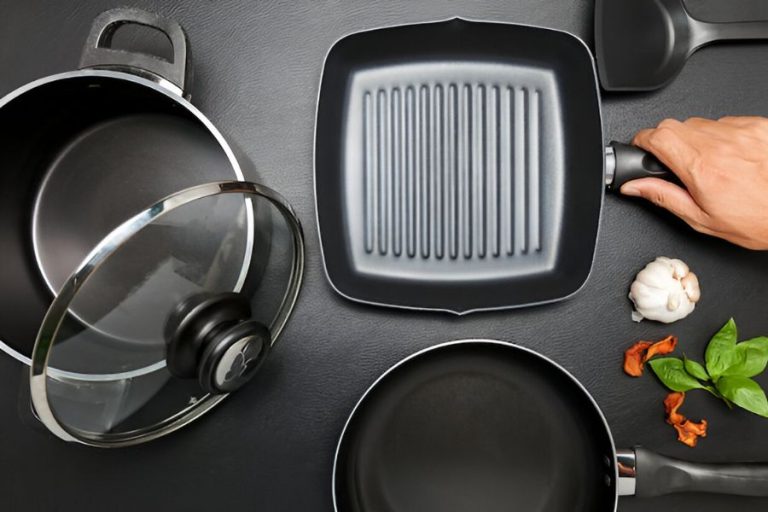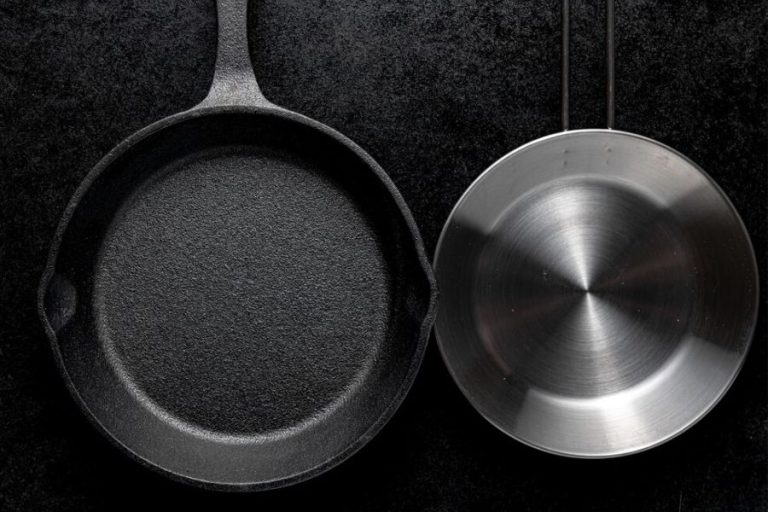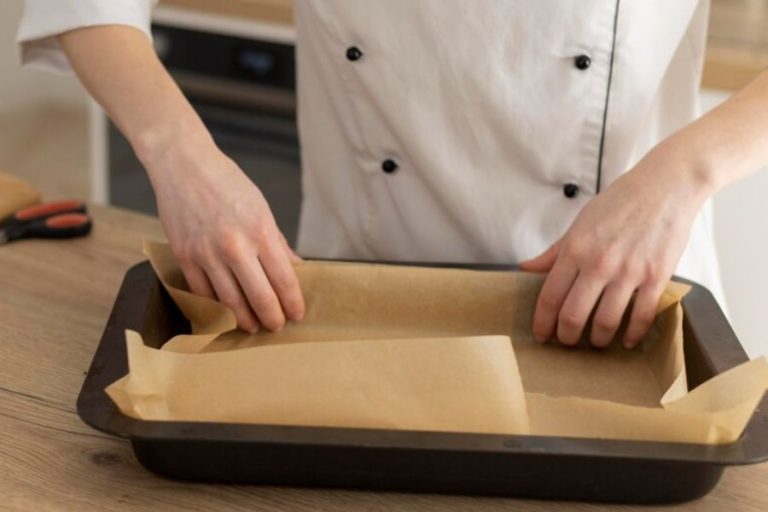Choosing the right oven-safe cookware material is essential for cooking efficiency and achieving the best results in the kitchen. Each type of cookware has unique properties that make it suitable for specific tasks, and understanding these can help you make the most out of your cooking. Whether you’re looking to roast, bake, sear, or braise, the right material ensures your food is cooked evenly, retains heat, and comes out perfect every time. In this blog, I’ll take you through the most popular and best materials for oven safe cookware, from cast iron to ceramic to glass, so you can choose the best one for your cooking needs.
Cast Iron: The Ultimate Heat Retainer
Cast iron cookware is a kitchen staple known for its strength, durability, and excellent heat retention. Made by pouring molten iron into a mold, cast iron is typically heavy but highly reliable for a variety of cooking tasks. Over time, it can become even better as it develops a natural non-stick surface when properly seasoned.
Heat Retention and Even Heat Distribution
One of the standout features of cast iron is its ability to retain and evenly distribute heat. This material heats up slowly but holds that heat for a long time, ensuring that food remains at the right temperature for a longer period. It’s especially great for slow-cooked dishes like stews, roasts, or braises. I love using it when I need to maintain a consistent heat over an extended cooking period, such as when baking bread or frying chicken.
Best Uses for Cast Iron in the Oven
Cast iron is fantastic for high-heat cooking. It’s perfect for baking cornbread, roasting meats, and even making pizza. I’ve found that using cast iron for baking bread creates the perfect crispy crust and tender inside. Additionally, cast iron skillets are great for searing meats on the stovetop and then transferring them to the oven for a perfect finish.
Pros:
- Exceptional heat retention and even heat distribution
- Durable and can last for generations
- Ideal for high-heat applications like frying and searing
- Develops a natural non-stick surface with seasoning
Cons:
- Heavy and may be hard to handle for some
- Requires regular seasoning to prevent rust
- Can be prone to rusting if not properly maintained
Stainless Steel: Versatile and Durable
Stainless steel cookware is widely known for its durability, strength, and sleek appearance. Made from a mix of steel, chromium, and other metals, stainless steel is corrosion-resistant, making it ideal for everyday use. Unlike cast iron, stainless steel doesn’t require any seasoning, and it’s perfect for fast-paced cooking with no need for constant upkeep.
Quick Heat Responsiveness and Versatility
Stainless steel heats up quickly and responds faster to temperature changes, making it ideal for precise cooking. Whether you’re searing, stir-frying, or making sauces, the quick heat response ensures that your food cooks evenly. I often use stainless steel pans for cooking vegetables or fish, where I need to adjust the heat rapidly for the best texture and flavor.
Best Uses for Stainless Steel in the Oven
Stainless steel is excellent for tasks that require quick, even cooking. It’s great for roasting vegetables, baking fish, or heating casseroles. It’s also wonderful for tasks like braising meats or making pan sauces. Stainless steel cookware is versatile and can be used for all types of oven cooking. It’s an ideal material for quick, precise tasks where you need to adjust the heat quickly, making it a go-to for fast weeknight meals.
Pros:
- Durable and resistant to rust and corrosion
- Quick to heat and responds well to temperature changes
- Ideal for precise cooking and quick meals
- Easy to clean and maintain, usually dishwasher-safe
Cons:
- Doesn’t retain heat as well as cast iron
- Food may stick if not properly preheated or oiled
- More prone to scratches compared to other materials
Cast Iron vs. Stainless Steel: The Best Oven Safe Cookware Material
Glass vs. Ceramic: Which Oven Safe Material is Better?
Ceramic: Beautiful and Efficient
Ceramic cookware is made from clay that’s fired at high temperatures to create a durable, non-reactive cooking surface. It’s often glazed, which not only makes it attractive but also adds a layer of protection that helps with heat distribution. Unlike other materials, ceramic can be colorful and aesthetically pleasing, making it perfect for both cooking and serving food directly from the oven to the table.
Heat Distribution and Aesthetic Appeal
One of the reasons I love using ceramic cookware is its even heat distribution. Ceramic heats up slowly but evenly, ensuring that dishes cook thoroughly without hot spots. It’s especially great for slow-cooked dishes like casseroles, baked pastas, and roasts, where consistent temperature control is essential. Plus, ceramic is beautiful to look at, and many dishes are perfect for bringing straight from the oven to the dinner table.
Best Uses for Ceramic in the Oven
Ceramic cookware is excellent for baking, cooking casseroles, and roasting. It’s perfect for lasagna, chicken pot pie, or a baked fruit cobbler. I also love using ceramic for baked custards or pot roast because it holds the heat and maintains even cooking. Ceramic is the material of choice when I want both functionality and style in my oven.
Pros:
- Beautiful and comes in a wide range of colors and designs
- Even heat distribution for slow cooking
- Doesn’t react with acidic foods like tomato sauces
- Non-reactive, making it ideal for healthy cooking
Cons:
- Breakable if dropped
- Can be heavy and harder to handle
- May have limited heat resistance compared to cast iron or stainless steel
Glass vs. Ceramic: Which Oven Safe Material is Better?
Glass: Clear, Safe, and Easy to Monitor
Glass cookware is widely loved for its transparency and ease of use. Borosilicate glass, the most common type used in cookware, is heat-resistant and can withstand high oven temperatures. Glass allows you to monitor your food as it cooks, which is a huge advantage when making delicate dishes like custards or baked goods.
Heat Resistance and Performance
Glass performs well in the oven, especially at moderate temperatures. It’s safe for most recipes that require baking or roasting at temperatures up to 450°F. However, glass is not as heat-retentive as cast iron, so it may cool down faster once out of the oven. I tend to use glass for baking cakes or cookies where the transparency lets me check on the process without disrupting the cooking.
Best Uses for Glass Cookware in the Oven
Glass cookware is perfect for baking, casseroles, and roasting. It works well for dishes like lasagna, roasted vegetables, or even fruit crisps. The transparency makes it easier to monitor cooking without opening the oven, which can help maintain consistent heat. Glass baking dishes are a staple in my kitchen for making baked pasta dishes or even baked desserts.
Pros:
- Easy to monitor the food through the clear glass
- Doesn’t react with food, keeping flavors intact
- Non-porous, so it won’t absorb flavors or odors
- Ideal for baking, casseroles, and roasts
Cons:
- Less heat retention compared to cast iron
- Can break or shatter if dropped or exposed to extreme temperature changes
- Not ideal for high-heat frying or searing
Enamel-Coated Cookware: Combining Durability and Style
Enamel-coated cookware is typically made of cast iron or steel that is coated with an enamel layer. The enamel, often made from glass-based materials, provides an extra layer of protection to the cookware. It gives the cookware a sleek, colorful appearance and makes it easier to clean. This type of cookware offers a combination of cast iron’s heat retention and the smooth, non-reactive surface of enamel.
Heat Resistance and Non-Stick Properties
Enamel-coated cookware is highly heat-resistant, capable of withstanding high oven temperatures (usually up to 500°F or more, depending on the brand). The enamel coating provides some non-stick properties, making it easier to cook certain dishes without worrying about sticking or burning. For example, enamel-coated Dutch ovens and pots are excellent for slow-cooking, braising, and even baking. However, while the enamel provides some non-stick properties, it doesn’t replace the seasoned surface of cast iron, which means it might not be entirely non-stick in every scenario.
Best Uses for Enamel-Coated Cookware in the Oven
Enamel-coated cookware is ideal for dishes that require even heat distribution and long cooking times, such as braised meats, stews, and baked casseroles. I’ve used enamel-coated pots to bake bread and roast meats with excellent results, as it provides steady, even heat. It’s also perfect for baking and roasting vegetables or making soups where a consistent temperature is crucial.
Pros:
- Durable and long-lasting with proper care
- Non-reactive surface, which doesn’t alter the flavor of food
- Attractive colorful options for kitchen decor
- Easier to clean compared to traditional cast iron
Cons:
- Can chip if mishandled or dropped
- Less heat retention than uncoated cast iron
- Can be more expensive than plain cast iron or steel
Aluminum: Lightweight and Heat-Efficient
Aluminum cookware is lightweight, highly affordable, and great at distributing heat quickly. Unlike heavy-duty materials like cast iron, aluminum heats up almost immediately when placed on the stove or in the oven. It’s often used in baking sheets, roasting pans, and even casserole dishes. One of the key features of aluminum cookware is its affordability and versatility.
Best Uses for Aluminum in the Oven
Aluminum cookware is perfect for tasks that require quick heat response such as baking cookies, roasting vegetables, or baking pastries. I often use aluminum for light baking tasks and sheet pan meals because of its ability to heat up evenly without a lot of wait time. Aluminum is also great for baking cakes and pies, as it provides an even cook and allows for quick temperature adjustments when needed.
Pros:
- Lightweight and easy to handle
- Heats up quickly and provides even heat distribution
- Affordable and widely available
- Non-reactive and doesn’t alter food flavor
Cons:
- Prone to scratches and dents over time
- Not as durable as stainless steel or cast iron
- Can warp under high heat or improper handling
When to Choose Aluminum Over Other Materials
If you need something light, budget-friendly, and able to handle quick, even heating, aluminum is a good choice. It’s best used for light baking, sheet pan meals, or when you need to bake large batches of food quickly. Aluminum is a great material when you’re looking for a non-heavy-duty cookware option.
Comparison of Oven-Safe Cookware Materials
We’ve covered a variety of materials, including cast iron, stainless steel, ceramic, glass, enamel-coated, and aluminum cookware. Each has its unique features, from heat retention to durability, maintenance needs, and aesthetic appeal.
Comparison of Heat Resistance, Durability, Maintenance, and Price
- Heat Resistance: Cast iron and enamel-coated cookware have the highest heat resistance, capable of withstanding 500°F and higher. Aluminum and stainless steel have moderate heat resistance, while ceramic and glass perform well in moderate heat (up to 450°F).
- Durability: Cast iron and stainless steel are the most durable materials, with proper care lasting for decades. Aluminum and ceramic are slightly less durable, while glass is more prone to breakage.
- Maintenance: Stainless steel and aluminum are the easiest to maintain, requiring minimal effort. Cast iron and ceramic require more care (e.g., seasoning cast iron and being careful with ceramic’s glazing).
- Price: Aluminum is the most affordable, followed by stainless steel. Cast iron and ceramic tend to be higher in price, while enamel-coated cookware usually falls on the higher end due to the coating.
Which Material is Best for Specific Cooking Tasks?
- Cast iron is best for slow roasting, frying, and baking.
- Stainless steel is ideal for precision cooking like sautéing and searing.
- Ceramic is excellent for casseroles, baked pasta dishes, and braised meats.
- Glass is perfect for monitoring food while baking or roasting.
- Enamel-coated cookware is great for slow cooking and even heat distribution.
- Aluminum is the go-to for quick baking and light roasting.
Glass vs. Ceramic: Which Oven Safe Material is Better?
Conclusion: Choosing the Right Oven-Safe Cookware for Your Needs
Selecting the right oven-safe cookware material ultimately depends on your cooking style, budget, and maintenance preference. If you’re after heat retention and longevity, cast iron is the perfect choice. If you need quick responsiveness and ease of maintenance, stainless steel might be the way to go. For those who value aesthetic appeal and even heat distribution, ceramic and enamel-coated cookware shine. If you prefer something lightweight and affordable, aluminum might be your best bet.
Consider the cooking tasks you do most often and choose cookware that fits your needs. No matter your decision, each material offers its own set of unique advantages, and with the right care, it will last you for years to come.
FAQs
Can you use aluminum cookware in the oven?
Yes, aluminum cookware is oven-safe and performs well for most baking and roasting tasks. However, it’s best to use aluminum at temperatures under 450°F to avoid warping. For higher heat applications, heavy-duty aluminum or aluminum with a thicker base is recommended for better durability. Be sure to check the manufacturer’s guidelines for any specific temperature limits.
Is cast iron cookware dishwasher safe?
Cast iron cookware is not recommended for the dishwasher, as the harsh detergents can strip away the seasoning layer, leading to rusting. After use, it’s best to wash your cast iron by hand with minimal soap and dry it thoroughly. Applying a thin layer of oil after cleaning helps maintain its seasoning and non-stick properties.
Is ceramic cookware safe to use in the oven?
Yes, ceramic cookware is safe for use in the oven, typically up to 450°F. It’s excellent for baking and slow cooking. However, be cautious with sudden temperature changes, as ceramic can crack under extreme heat shifts. Always avoid placing a hot ceramic dish directly into cold water or on cold surfaces to prevent damage.
Can you use glass cookware under the broiler?
While glass cookware is oven-safe, it is not recommended for use under a broiler. The intense, direct heat from the broiler can cause glass to shatter. If you need to use a broiler, it’s best to switch to cast iron or stainless steel for better performance and safety at high temperatures.
What is the safest cookware for baking at high temperatures?
Cast iron and enamel-coated cast iron are the safest choices for baking at high temperatures. These materials can withstand extremely high heat, often up to 500°F or more, making them perfect for tasks like baking bread, roasting meats, and high-heat frying. Stainless steel also performs well but may not retain heat as effectively as cast iron.
Does aluminum react with food in the oven?
Aluminum cookware is non-reactive with most foods, but it can sometimes react with acidic foods (like tomatoes or citrus). This can lead to a metallic taste and possible discoloration of the cookware. To avoid this, opt for anodized aluminum, which has a protective layer that prevents reactions with food while maintaining its strength and heat conductivity.



